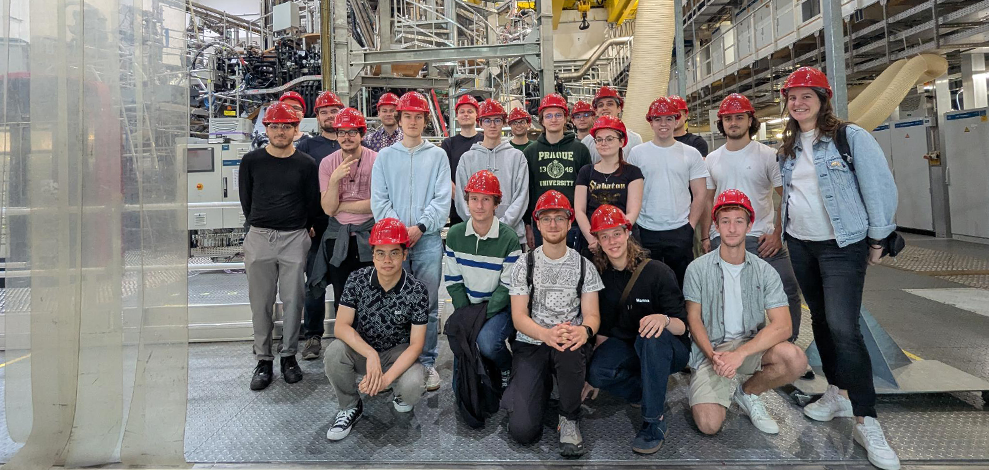In July 2025, the "Introduction to Plasma Physics" course took a trip to Greifswald. 17 students, accompanied by four student supervisors and Prof. Judith Golda, explored various stations that gave the students exciting insights into new areas of plasma physics.
The first visit was to the Leibniz Institute for Plasma Physics (INP) in Greifswald, the largest non-university research facility for low-temperature plasmas in Europe. Here, the students were able to learn how the theoretical principles learned in the course are implemented in applied research: from application-oriented basic research to the development of plasma-based products and processes.
The next stop was the Lubmin nuclear power plant, where the students were given a guided tour. When it was commissioned in 1974, eight pressurized water reactors were planned. However, before the last of these could be completed, the power plant had to be shut down in 1990 due to safety deficiencies. One of the nuclear power plant units, which was closed before final completion, therefore provides a unique insight into a power plant of this type.
Nuclear power plants use nuclear fission, a process that is associated with problems such as the very long half-life of radioactive waste. In contrast, there is another concept that researchers have been working on for decades to harness for energy supply: nuclear fusion. This is a nuclear reaction in which two atomic nuclei fuse to form a larger nucleus, releasing immense amounts of energy in the process. However, this fusion is not so simple: as atomic nuclei are positively charged, they repel each other - physicists call this the Coulomb barrier. To overcome this, high pressure and extremely high temperatures of around 100 to 150 million degrees are required. This creates a plasma and ignites fusion. However, more research is needed before nuclear fusion can be used as a climate-neutral and sustainable source of energy.
The largest research reactor in Germany is the Wendelstein 7-X in Greifswald, operated by the Max Planck Institute for Plasma Physics (IPP). The students were impressed to experience the facility in real size and to see how complex and fascinating nuclear fusion research is. For students who want to delve further into the subject, final theses and projects are also possible at the IPP.
Both the students and Prof. Golda were delighted with the excursion: "It was really nice to see how many interested questions the students asked. Excursions like this are a great opportunity to think outside the box and learn about practical applications for what we have learned."
Photo: © Faculty of Physics and Astronomy / Golda


